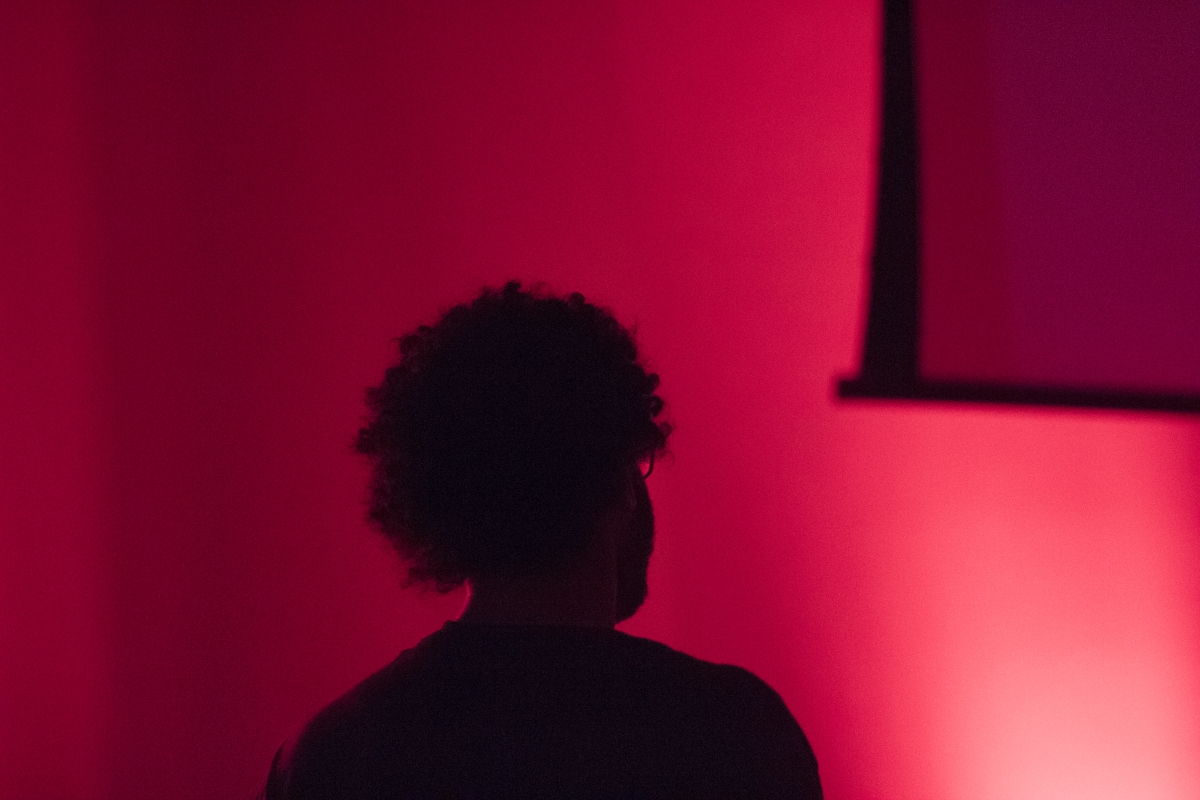Visiting the Bronx Museum of the Arts: Punk Night
Written by Tiffany Hernandez / Photos by Tiffany Hernandez & Dondre Green
My immediate thought was, “Why are there chairs at a punk show?”
I had just walked up the stairs to the second floor of the Bronx Museum where a projector lit up the spacious room and chairs were laid out in several rows. The projector displayed the flyer for the night’s event, which was a collaboration between the museum and Bronx Natives.
I was looking through the pamphlet of the Bronx Museum events for the upcoming months during my last visit and I noticed the information for a punk night at the museum. My immediate reaction was one of unwavering excitement – a punk show at a Bronx museum? The event itself was inspired by Gordon-Matta Clark’s exhibit Anarchitect which I thoroughly enjoyed for its contemplation on the intersection of anarchy and architecture.
Part of that inspiration immediately made sense to me – punk and anarchy often went hand in hand. Punk music has roots in rebellion, in fighting against the mainstream culture and against systemic structures. But, it wasn’t until after the show that I started to think about the intersection of punk and architecture.
My original question of, “Why are there chairs at a punk show?” would be the foundation for exploring the idea of how physical space plays an important part in holding space for marginalized communities.
How physical spaces, especially a public space such as a museum, are organized in such a way for individuals to feel welcomed into a space. Accessibility, physically, emotionally and mentally, it is created by physical organization – chairs, tables, stage, and lighting all affect the way we perceive spaces and whether they feel right for us. As someone who grew up going to shows since the age of fourteen, I was taken aback by the presence of chairs facing a stage. I grew up on shoulder-to-shoulder shows. On the other hand, as someone who enjoyed art shows of all varieties, it only took me a second to understand that the chairs were simply staging. At the end of the day, I was in a museum and museums are very calculated spaces.
“I saw a mosh pit open up, led by people of color, in front of bands of color in the middle of a museum in the Bronx.”
The night began and people filed into the chairs. I was pleasantly surprised that folks of all kinds flowed through the room and I was grateful for the chairs and the accessibility they offered.
Two Bronx-based bands Da Pop and Statik Vision performed while the folks at Bronx Native sold merch and drinks and set the tone for the night with their high energy. The show itself was a treat. Despite the chairs, despite the inevitably organized nature of an event hosted at a museum, a mosh pit opened up. There was something quiet, but high-energy about the crowd and the space that night. It was a silent vibration underneath the toes – steady, peaceful but forceful. I knew that feeling well, it is one I’ve experienced at every show I’ve ever gone to. I wasn’t surprised that by the end of the night, there were people dancing around and moving chairs so that they could move their bodies next to one another.
But, overall I was still in awe for days after. I saw a mosh pit open up, led by people of color, in front of bands of color in the middle of a museum in the Bronx.
Museums can often be exclusive places that aren’t socially, economically, physically accessible for marginalized folks to visit, much less to host punk-oriented shows in. And the Bronx’s underground art scene is often slept on as well, people (both those who reside in the Bronx and those who don’t) often refusing to host or attend events in the borough. Overall, I knew the weight behind this event before attending. But, to see the subtle magic it produced, was another.
I have always known that physical space matters – but it was this event that made me realize, chairs don’t. Chairs are only a tool, there are other important elements, intangible ones such as intention and energy, that determine the way we perceive physical space.
I think back to the Gordon-Matta Clark’s exhibit. Clark’s work focused on how physical spaces spoke to our environment at large. I wonder what Gordon Matta-Clark felt in the buildings he explored and if he felt an energy that spoke louder than holes in the walls.
The Bronx Native’s Punk Night at the Bronx Museum felt like a small gesture towards making room for marginalized communities – it was an offering for those so often excluded from physical art spaces, the offering was cracking open a window just slightly in a stuffy room in the middle of summer. It was more than a just sense of relief, it was space to breathe.




